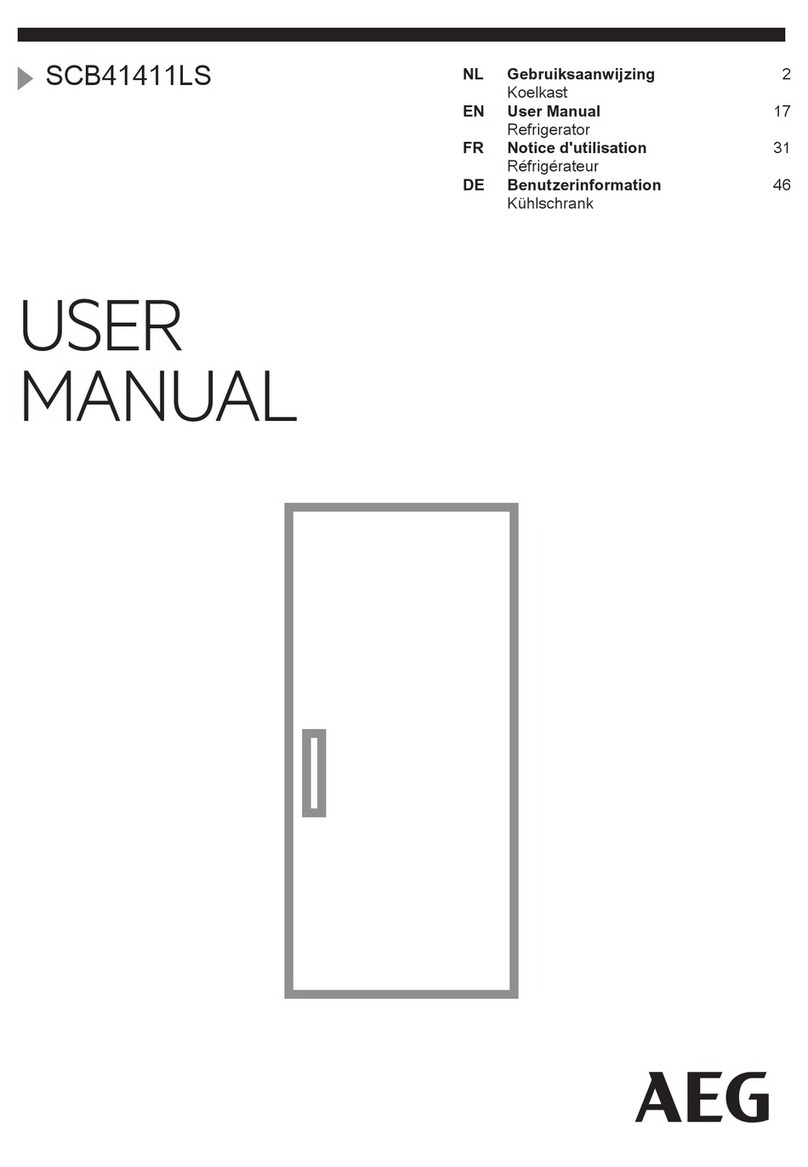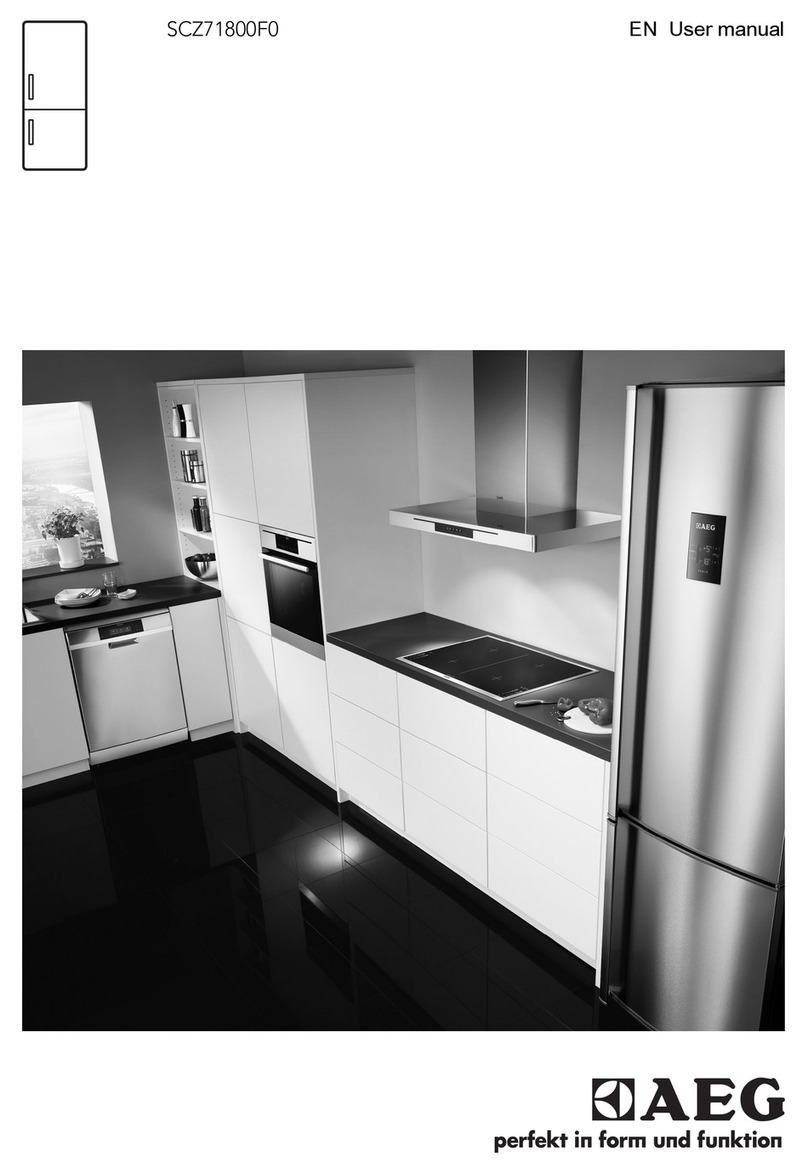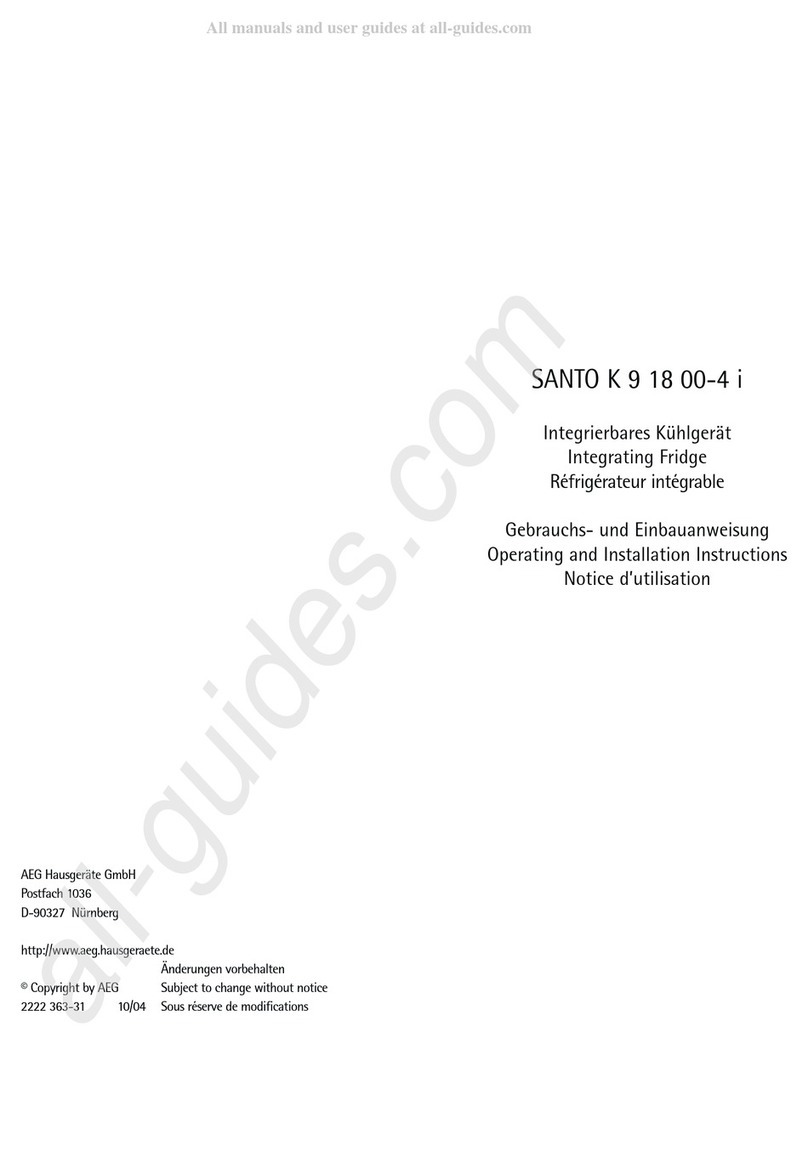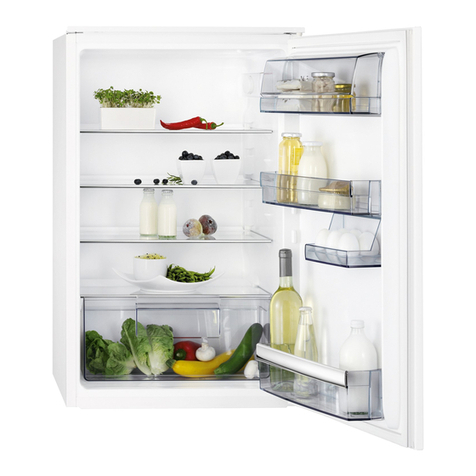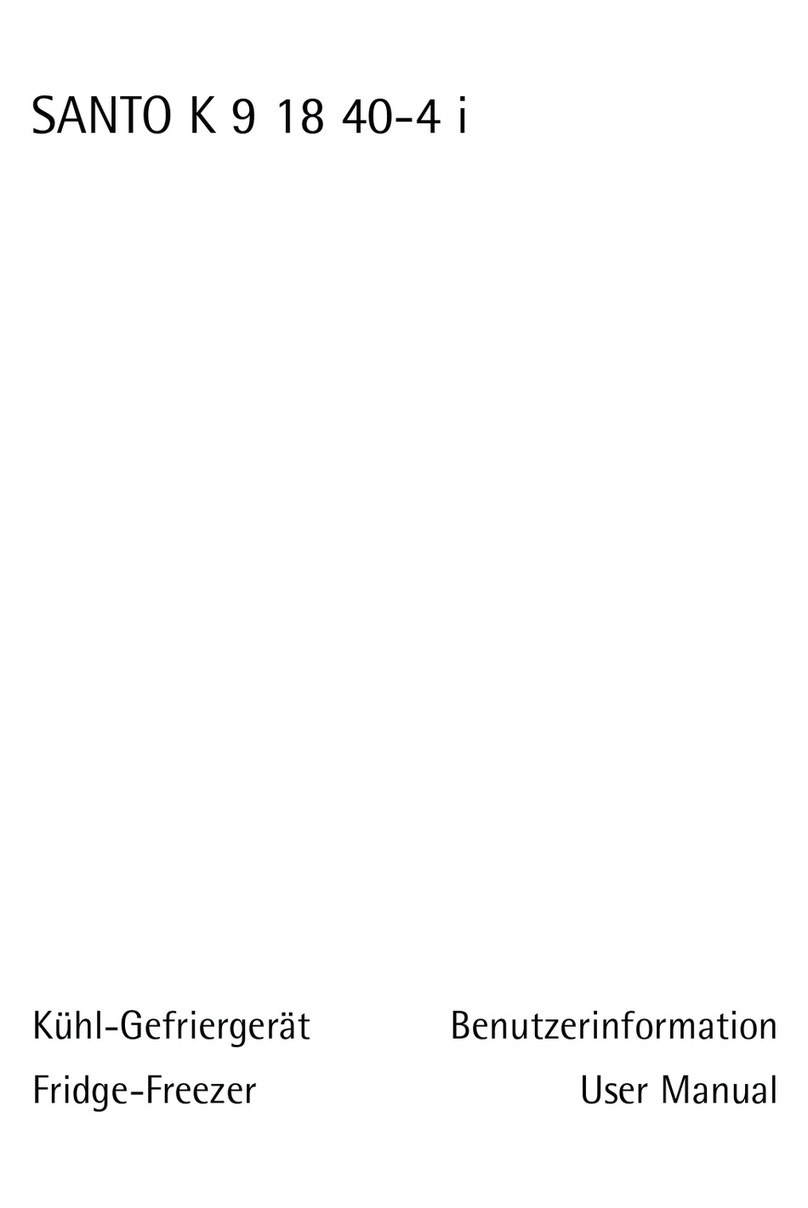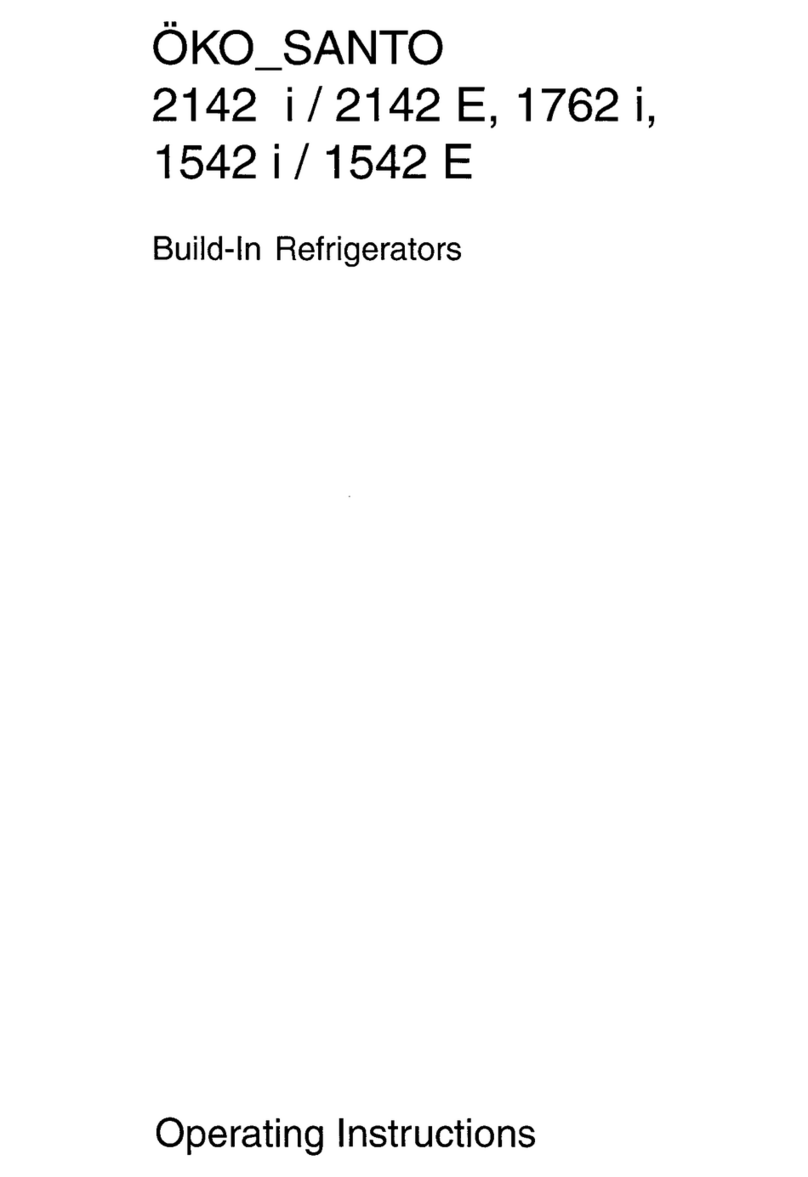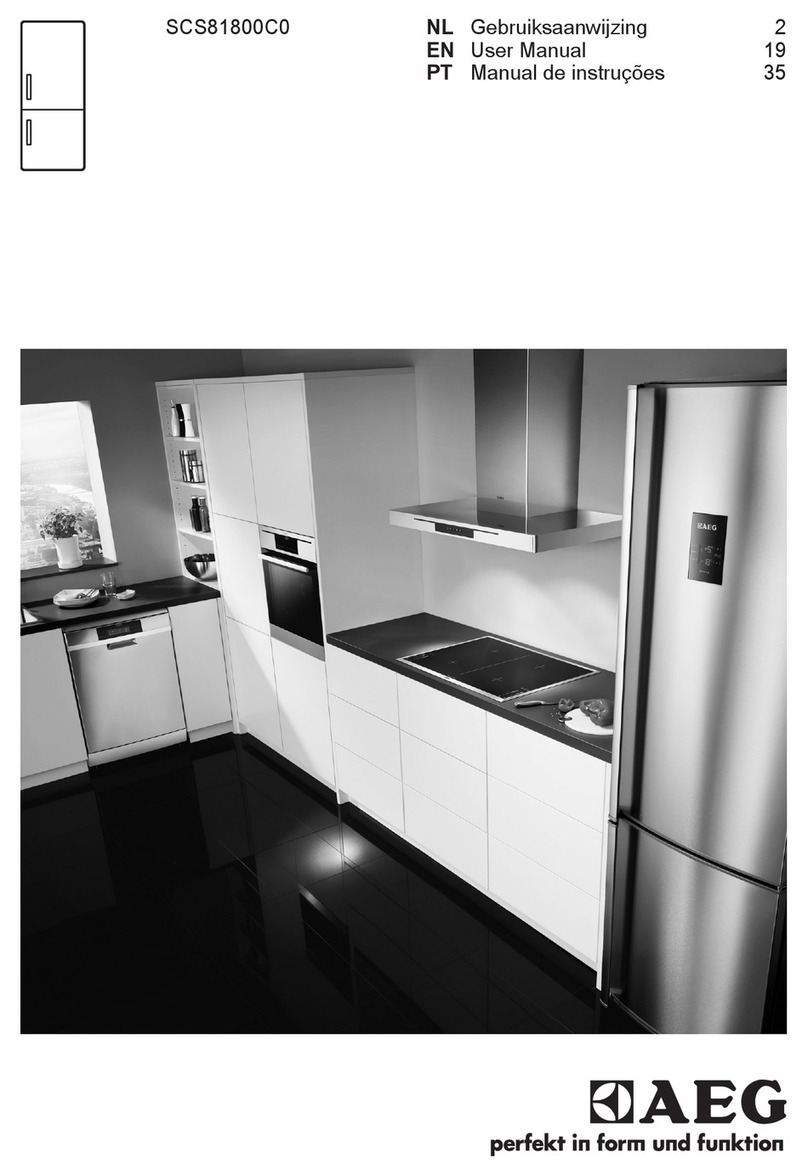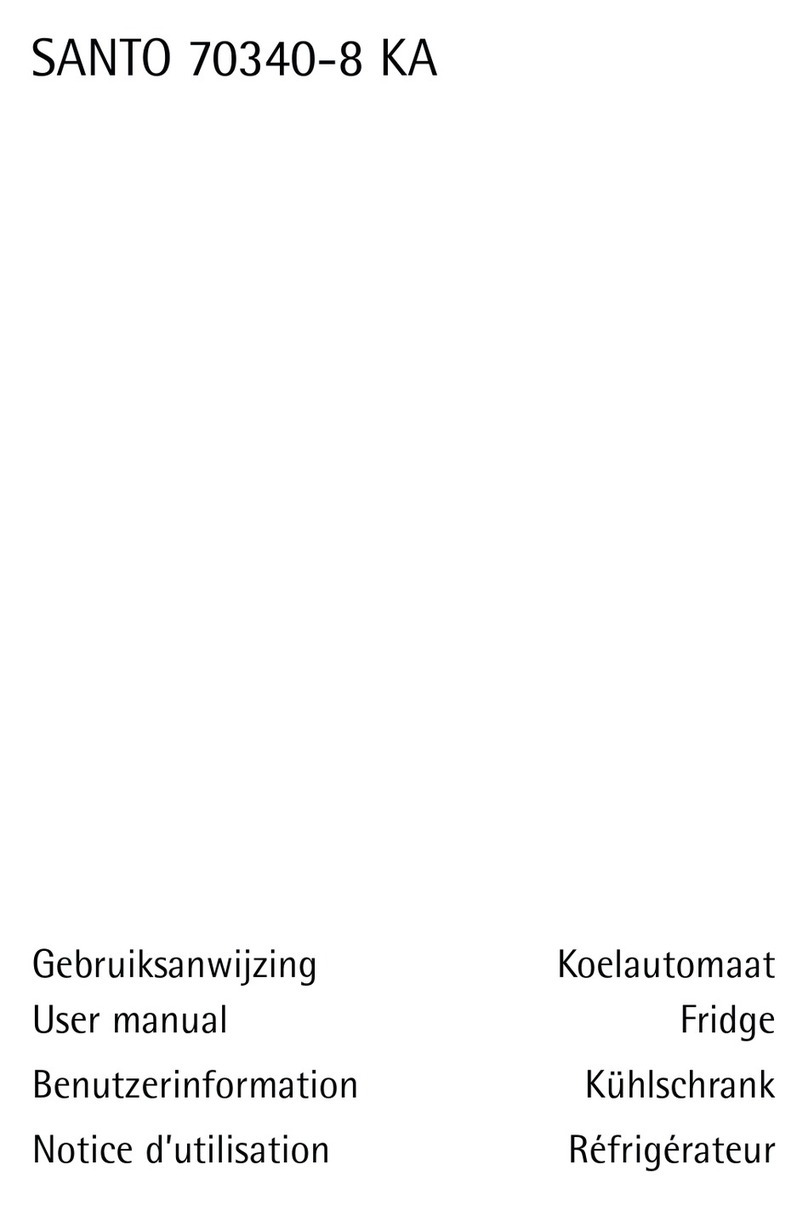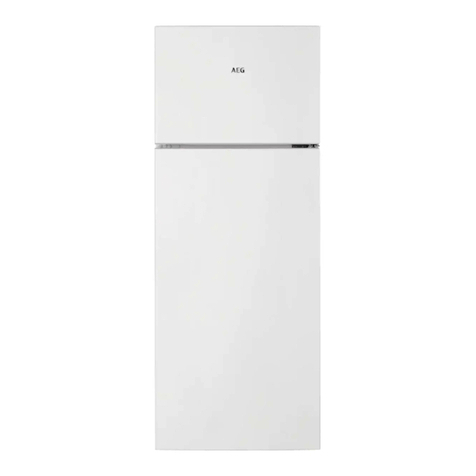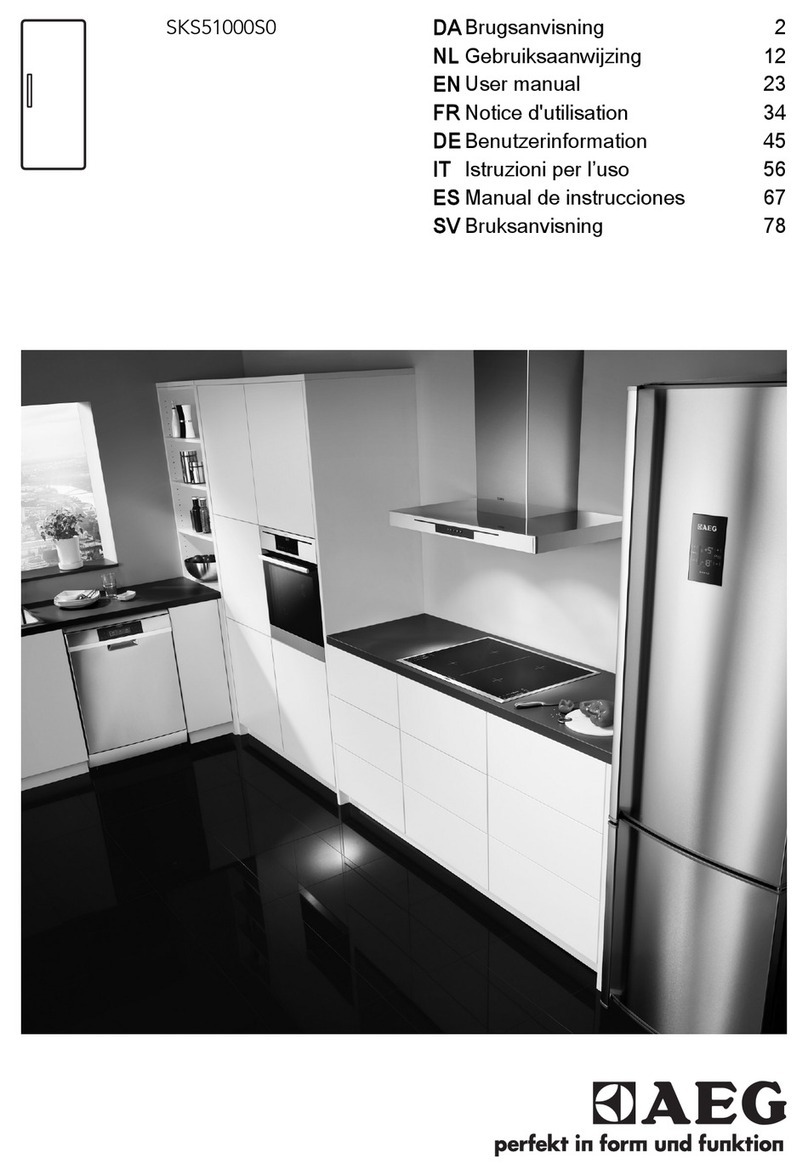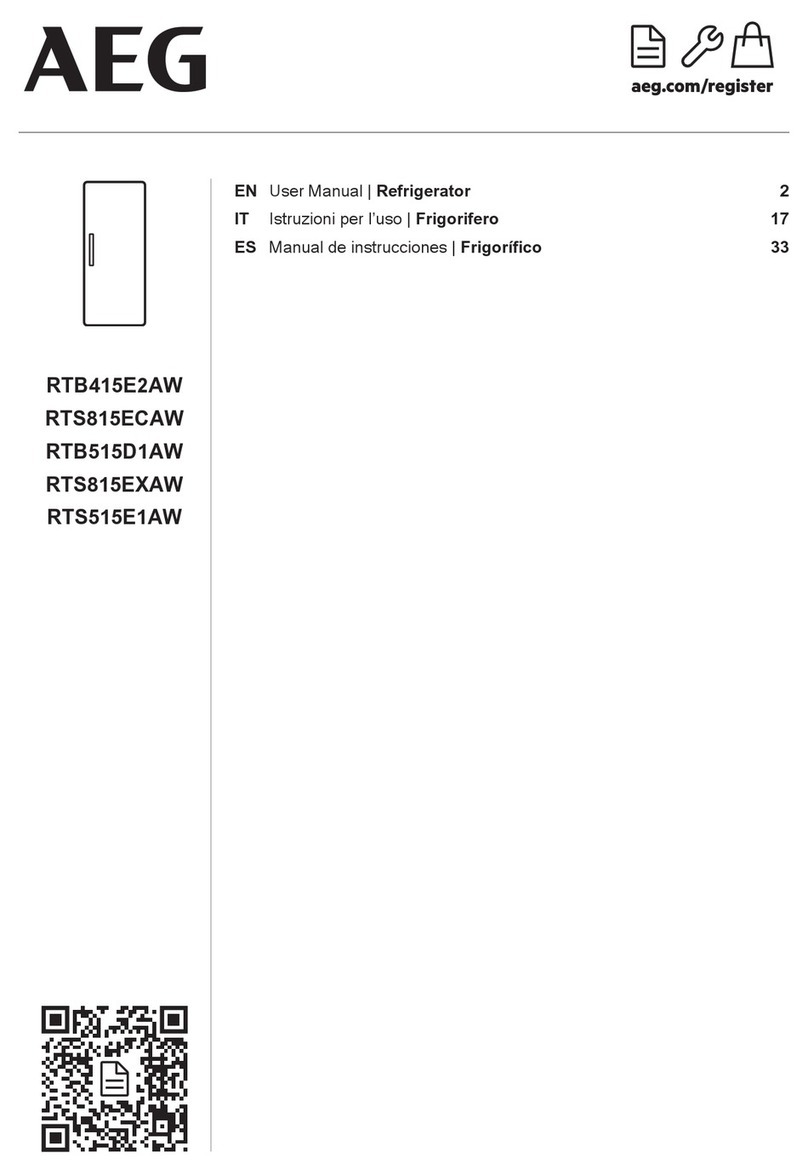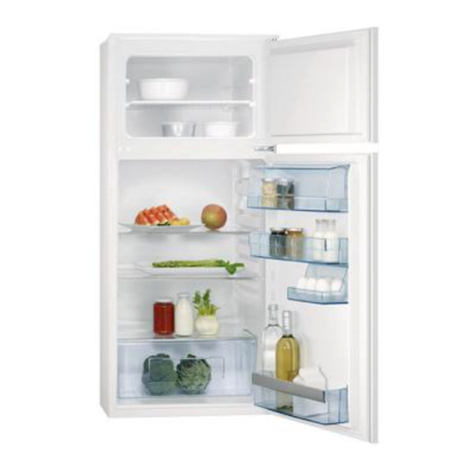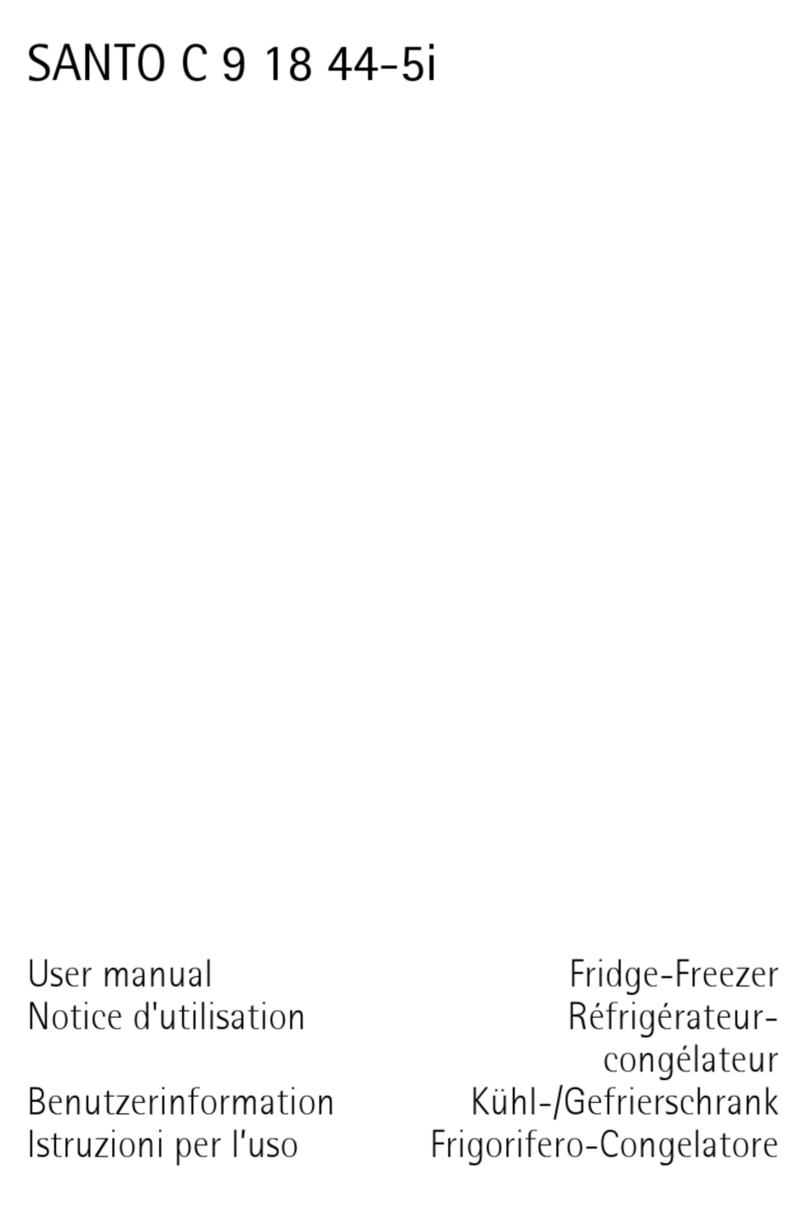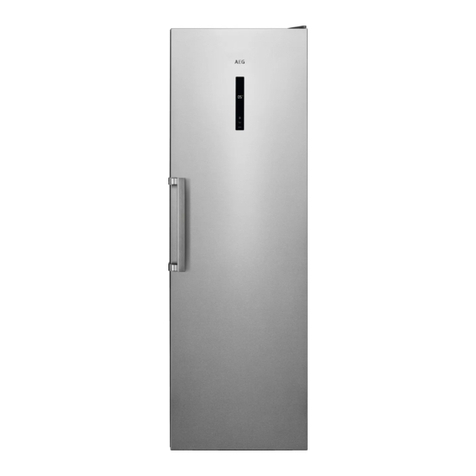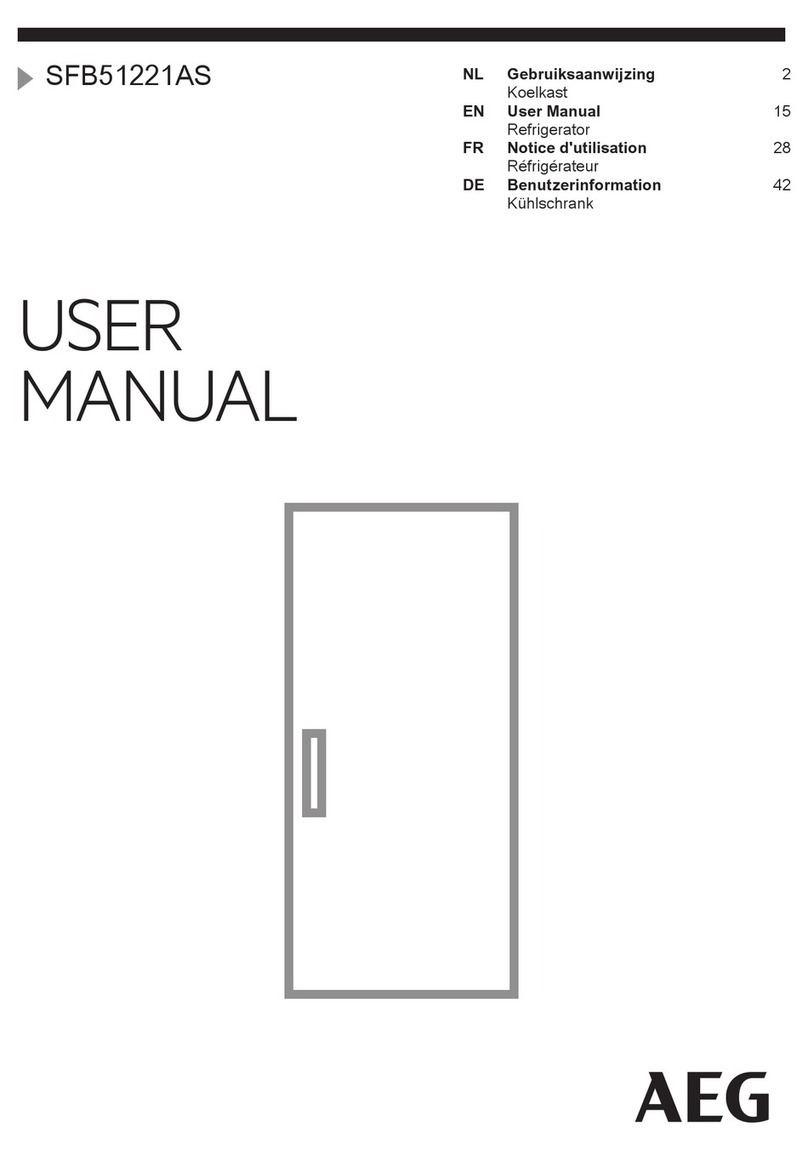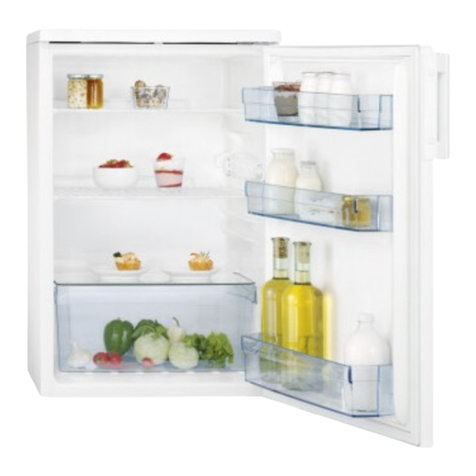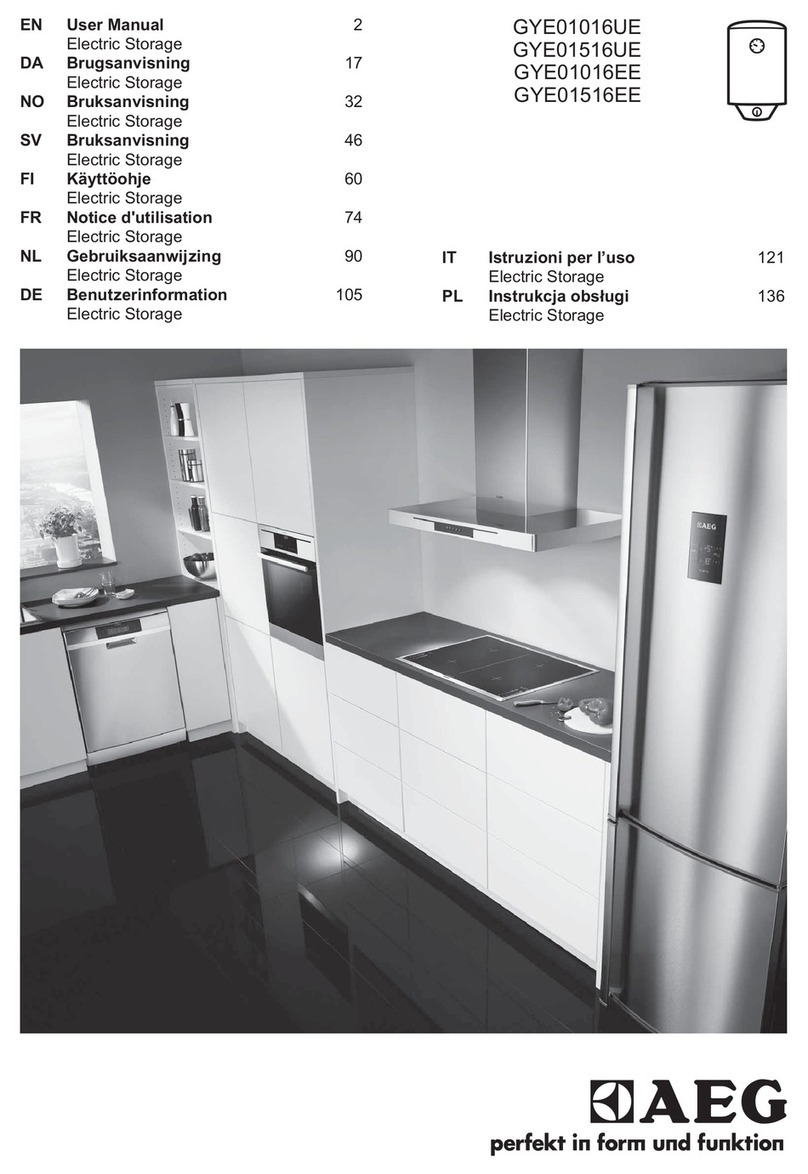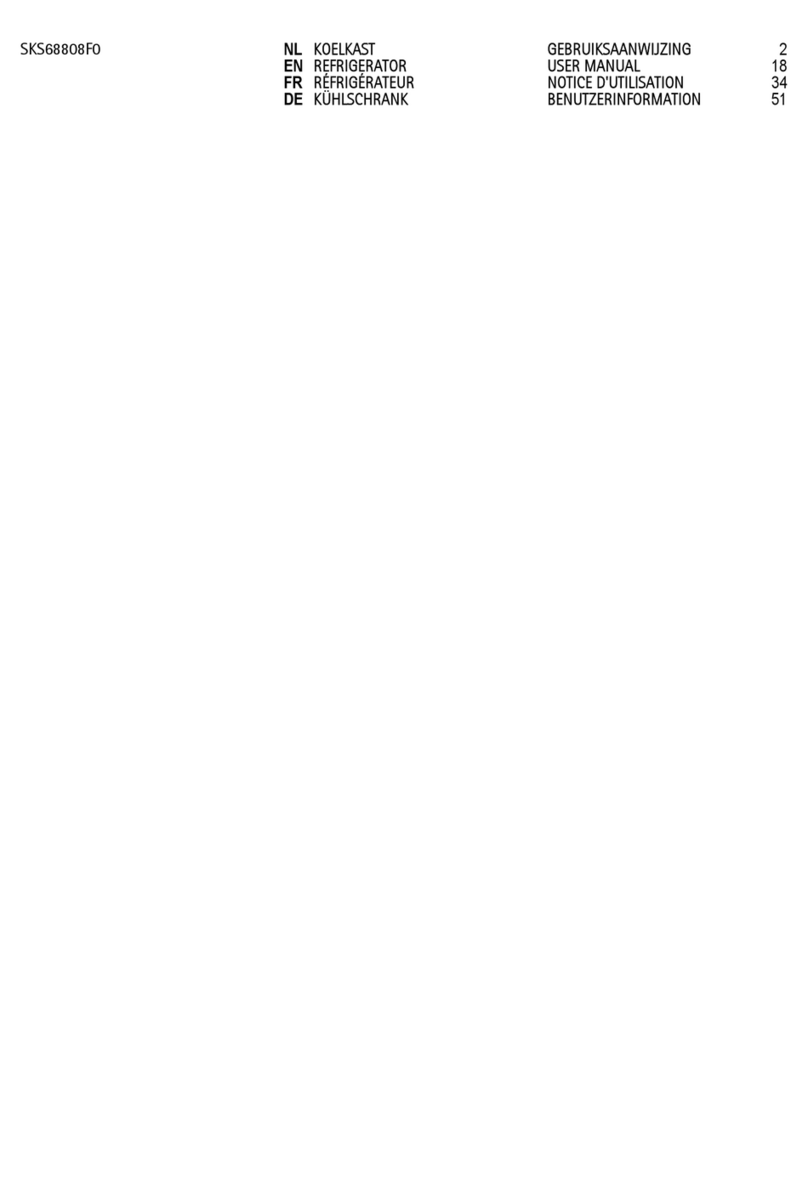12
GB
When wiring the plug, ensure that all strands of wire
are securely retained in each terminal. Do not forget
to tighten the mains lead clamp on the plug.
Warning! A cut-off plug inserted into a 13 amp
socket is a serious safety (shock) hazard.
Ensure that the cut-off plug is disposed of
safely.
Voltage 220/240 V AC
Fuse rating 13 amps
See rating plate for further information.
The rating plate is inside, on the left.
Plug socket
Fig. 7
The plug socket necessary for connection of your
appliance to the electricity supply should be posi-
tioned so that it is possible to pull out the appliance
plug.
If your appliance is installed under a continuous
worktop, the plug socket should be provided as
shown in Fig. 7.
A concealed protective contact plug socket requires
10 A/16 A fusing.
Starting up and temperature
regulation
Fig. 8
Insert the plug of the connection lead into the plug
socket with protective earth contact.
When the refrigerator compartment door is opened,
the internal lighting is switched on.
The temperature selector knob is located on the RH
side of the refrigerator compartment.
Setting "0" means: Off.
Turning clockwise in direction "1": Refrigerating
unit on, the latter then operating automatically.
Setting "1" means:
Highest temperature, warmest setting.
Setting "6" (end-stop) means:
Lowest temperature, coldest setting.
The temperatures in the refrigerator compartment
and freezer compartment cannot be independently
regulated.
At a low ambient temperature of around 16°C, set-
ting "1" should be selected. At ambient temperatures
of around 25°C, select setting "2". If you require a
lower temperature, select setting "3" or "4". On this
setting, you can be sure that fresh food will be reliably
frozen and that a storage temperature of -18°C will
be maintained in the freezer compart- ment.
If you want to freeze fresh food rapidly, select set-
ting "6", ensuring that the temperature in the refriger-
ator compartment does not drop below 0°C. You
should also promptly reset the temperature regulator
to setting "3" or "4".
A high room temperature (25°C to 32°C) together
with a very cold temperature setting "5" or "6" can
lead to the refrigerator unit running continuously,
under which circumstances the evaporator on the
rear wall of the refrigerator compartment can no
longer defrost automatically. In this event, set the
temperature slightly warmer, at "3" or "4", so that the
refrigerating unit is controlled and the defrosting cycle
switched in automatically.
The internal temperature is strongly affected by the
ambient temperature, loading, and frequent door-
opening. If the setting is changed, the refrigerating
unit does not start immediately if automatic
defrosting is in progress.
Correct storage
Fig. 9
1=Butter and cheese
2=Eggs, tubes, preserves
3=Drinks
4= Cheese storage, fruit, and vegetables
5=Meat, salami, cold cuts, dairy produce
6=Ready meals, pastries, preserves
Adjusting the heights of the
storage shelves and wire trays
Various glass or plastic storage shelves and wire
storage trays are included with your appliance -
different models have different combinations.
You should always place a glass or plastic shelf into
the first set of guides, above the fruit and vegetable
containers, and keep it in this position.
In order to arrange the internal space to suit your
individual requirements, you can adjust the heights
of the other shelves and wire trays to a number of
different positions to accommodate stored goods of
varioussizes.To do this, pull the shelf or tray slightly
forwards until it can be tilted upwards or down-
wards and taken out. To fit it at a different level,
reverse the procedure.
